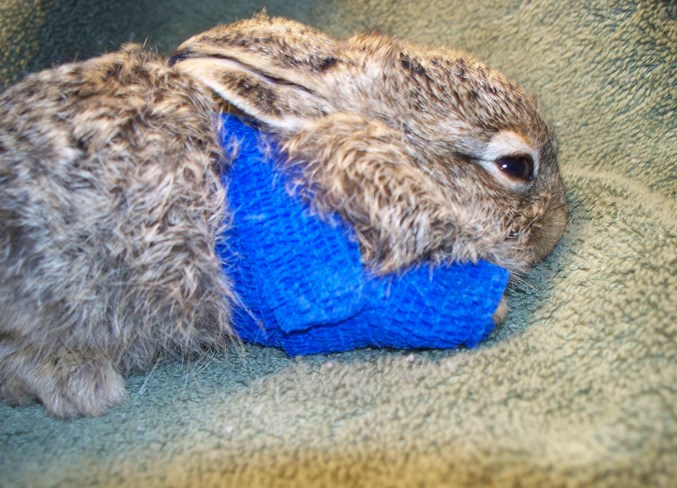Spring has officially sprung, which means mammals are being born throughout Rocky View County. The influx of baby wildlife also means the busy season has begun for the Alberta Institute for Wildlife Conservation (AIWC).
As the weather continues to warm up, AIWC Executive Director Holly Lillie is reminding residents, baby hares are usually left alone on purpose by the mother. Lillie said the best action to take when coming across a baby hare in the grass is to leave it alone.
“Because they’re such a cute species, and also due to the goodness of people when they see baby animals alone, especially baby hares, they often assume they’re orphaned,” she said. “There are definitely times when that’s the case, but more often than not, they are healthy and happy and doing their natural thing.”
Lillie said hares have a much better survival rate in the wild with their mothers than when they’re rehabilitated in captivity. She added roughly 100 baby hares are brought to AIWC every year, with the majority not in distress in the first place.
“We don’t want people to become accidental kidnappers in taking these hares from the wild,” she said.
The reason baby hares are left alone, according to Lillie, is because they are born without a scent. If the mother spends too much time with her young, she will transfer her scent to the baby, which can attract predators.
“She wants to give her babies the best chance they can have,” Lillie said.
She is quick to correct the myth that a hare will abandon her young if it is carrying a human’s scent.
“That’s an old wives’ tale, probably to get people to not touch baby hares or other animals,” Lillie said. “If you pick up a baby hare…you can gently set it down in the grass.”
Hares are a natural food source for many predators in the area, according to Lillie, including coyotes and birds of prey such as hawks and owls. Other potential predators include domestic cats and dogs.
While hares can be found in the countryside, Lillie said they most commonly populate areas near humans, where they are less likely to be hunted.
“They really love school playgrounds, I think because of the landscape there,” she said. “They definitely prefer urban settings, being in cities and neighbourhoods and residential areas.”
Fawns are another species in which the babies are left to their own devices for most of the day, according to Lillie.
“It’s the same thing where if the mom spends too much time with the baby, she’s going to attract predators and transfer her scent,” she said. “They’re often left alone until they’re a little bit older, and then they’ll start burrowing with mom.”
Though leaving a baby hare alone is generally the best approach, Lillie said, if the animal is on the side of the road, in a vehicle’s wheel well, or clearly injured, call the AIWC hotline at 403-946-2361.
Lillie said AIWC, which is located south of Madden, is forecasting another busy spring and summer season. She said the wildlife hospital expects to take in more than 1,000 wildlife babies, including hares, fawns, skunks, ducklings and songbirds.



